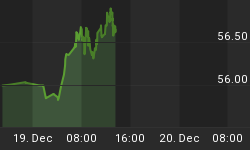The financial world is buzzing about former Fed chairman Ben Bernanke's recent trip to Japan, where he advised Japan's central bank chief Haruhiko Kuroda on how to manage his nation out of multi-decades of stagnant growth. Channeling economist Milton Friedman, Bernanke warned that Japan was vulnerable to perpetual deflation and stagnate growth and that helicopter money--where the government issues non-marketable bonds with no maturity date and the Central Bank buys them with counterfeited credit--was the most useful tool in overcoming this condition.
Bernanke encouraged Japan to carry on with the Abenomics policies that have failed to date by supplementing monetary policy with even more fiscal stimulus-as if Japan's 230% debt to GDP ratio wasn't enough. And he assured Abe and his staff that the Bank of Japan (BOJ) has instruments to ease monetary policy yet further.
And in case this village needed another idiot, Nobel laureate Paul Krugman, also chimed in. Arguing that Japan should raise its inflation target to 4 percent and embark on a significant but temporary fiscal stimulus to boost prices in the economy. Speaking at a conference on Thursday in Singapore, Krugman called for "a big burst of government spending and maybe also cash donations."
But the truth is that despite pumping trillions of yen into the financial system, Japanese money printing has had little or no effect in restoring growth. In fact, Japan has already undertaken the largest quantitative easing program--much larger in relative terms than the U.S. Federal Reserve and the European Central Bank.
Despite this, lawmakers in Japan are drinking the Keynesian Kool-Aid and have bought into the notion that inflation is the progenitor of growth. They are calling for a government debt package of about 10 trillion yen ($94 billion) financed by the BOJ.
The BOJ is currently purchasing nearly 110-120 trillion yen of bonds a year to satisfy a pledge to expand the balance of its holdings. And demand for Japanese Government Bonds (JGB's) is pushing those yields into negative levels that only a central banker could love. There is no private investors in JGBs any longer. The only buyers left are the price-agnostic BOJ and speculators trading bonds like stocks; hoping to grab enough principal appreciation to make up for the negative coupon, and then flip it to the next foolish gambler, or directly back to Japan's central bank as part of its latest bond-buying program.
But the BOJ's spending spree is not limited to JGB's; the Bank of Japan owns more than half of the nation's exchange-traded funds (ETF's). As you can imagine, all these asset purchases have exploded the BOJ's balance sheet to a record 432.8 trillion yen.
But the question for Messer's Abe and Kuroda is: if money printing is the solution, what is the actual problem?
In 2015 Japan stood as the fourth-largest economy in the world. And despite some fits and starts, that the Japanese economy has been stagnant since the early 1990's.
However, per capita GDP shows that Japan's growth has been on an impressive upward trajectory.
Indeed, Japan is growing on a per capita, or per person basis. Therefore Abe and Kuroda must believe that printing money is going to increase the population. Japan's working-age population peaked in the mid-1990s and has been declining since. And according to government projections the workforce is expected to shrink to 44 million by 2060, which is about half of its peak level.
This endless debt and money printing scheme is in reality a solution in search of a problem. Or, perhaps if central bankers were a more honest bunch, they would tell you the BOJ is using the growth excuse to tackle the real issue: Japan's tax base can no longer service its debt.
Therefore, its fiscal and monetary conditions must be completely taken over by the central bank in the doomed hope that inflation will become the nation's panacea. The outcome to this absurd plan would be a mystery if countries haven't tried this many times before. Like lemmings, the Japanese government and central bank will blindly follow the same path as Weimar Germany, Zimbabwe and Hungary. Perhaps they should read up on the history of hyperinflation.















